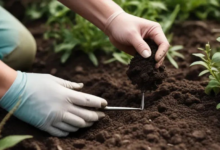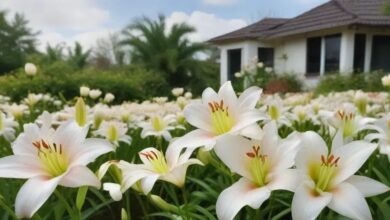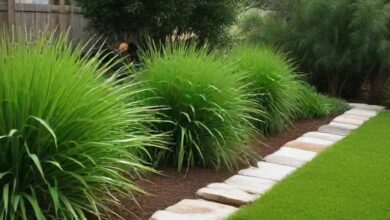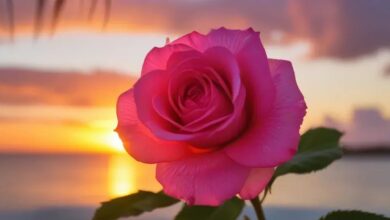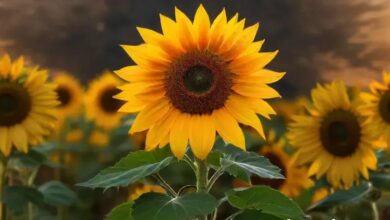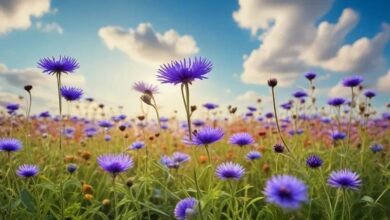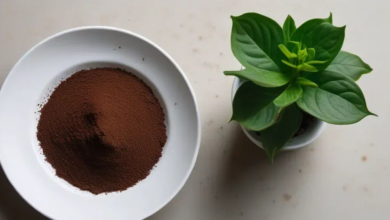How to Grow Herbs Indoors Without Sunlight (LED Grow Lights Guide)
Learn how to grow herbs indoors without sunlight using LED grow lights. Discover the complete guide to indoor herb gardening, light requirements.
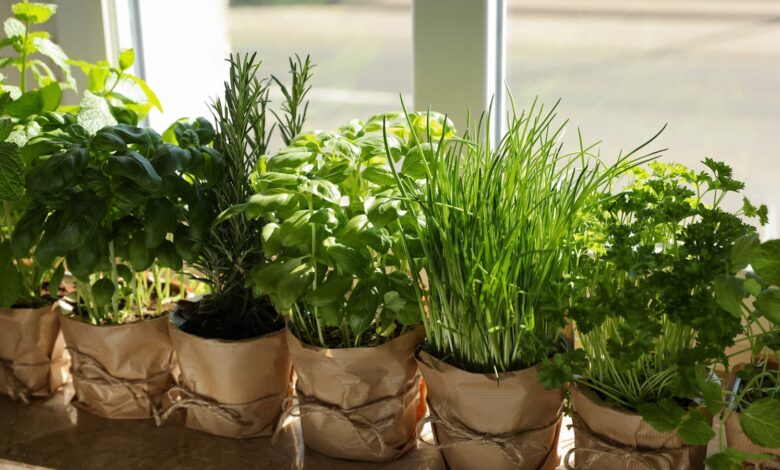
Growing herbs indoors without sunlight has become increasingly popular among home gardeners and cooking enthusiasts who want fresh, flavorful herbs year-round. Whether you live in an apartment with limited natural light, experience harsh winters, or simply lack adequate window space, indoor herb gardening offers a practical solution to achieve a thriving herb garden. The key to successful indoor gardening lies in that while natural sunlight is traditionally ideal, modern LED grow lights have revolutionized the ability to cultivate aromatic and delicious herbs in any environment.
LED grow lights are specially designed artificial lighting systems that emit the specific wavelengths of light plants need for photosynthesis and healthy growth. Unlike traditional sunlight that varies by season and location, these consistent light sources allow you to control exactly what your herbs receive. This technology has made growing herbs indoors not just possible but increasingly popular among culinary professionals and home cooks alike. The beauty of LED grow light technology is that it replicates the solar energy spectrum your herbs would naturally receive outdoors, enabling photosynthesis to occur efficiently indoors. Many gardeners find that herbs grown under full-spectrum LED lights produce just as much flavor and aroma as their outdoor counterparts, with the added benefit of year-round availability and protection from external elements.
The fundamentals of indoor herb cultivation require knowledge of plant biology, light science, and practical grow light selection. Most culinary herbs require between six to eight hours of intense light daily to develop their characteristic flavors and aromatic essential oils. By combining proper LED lighting solutions with appropriate containers, quality soil, and consistent watering practices, you can establish a productive indoor herb garden that transforms your kitchen or designated growing space. This comprehensive guide walks you through everything you need to know about growing fresh herbs indoors, from selecting the right grow light systems to maintaining healthy, harvestable plants. Whether you’re a beginner embarking on your first indoor growing adventure or an experienced gardener seeking to expand your cultivation techniques, this resource provides actionable insights for successful herb growing indoors.
Light Requirements for Indoor Herbs
Successful indoor herb growing begins with comprehending how different herbs respond to light variations. Most popular culinary herbs—including basil, thyme, mint, and rosemary—evolved as sun-loving plants in Mediterranean climates where they received abundant direct sunlight. When these plants transition to indoor environments, they experience a significant light reduction, necessitating supplemental illumination. The minimum light requirement for most herbs is generally six to seven hours of direct sunlight equivalent daily, though eight to twelve hours produces faster, more robust growth.
LED grow lights provide what experts call photosynthetically active radiation (PAR), which encompasses the specific light wavelengths—primarily blue and red—that trigger plant growth processes. Blue light wavelengths (400-500 nanometers) promote vegetative growth, compact plant structure, and chlorophyll production, while red light wavelengths (600-700 nanometers) stimulate flowering, fruiting, and the production of essential oils responsible for herb flavor and aroma. This distinction helps explain why full-spectrum grow lights work better than single-color options for indoor herb cultivation.
The intensity and duration of grow light exposure directly impact herb quality and yield. Plants measure light intensity using PPFD (Photosynthetic Photon Flux Density), measured in micromoles per square meter per second (μmol/m²/s). Most herbs thrive with PPFD values between 200-400 μmol/m²/s, depending on the specific variety. Additionally, the photoperiod—the duration of daily light exposure—influences hormone production and growth rates. Most herbs respond optimally to fourteen to sixteen hours of daily artificial light, though some shade-tolerant varieties like mint and parsley can manage with ten to twelve hours, making them excellent choices for beginners exploring indoor gardening without sunlight.
Choosing the Right LED Grow Light System
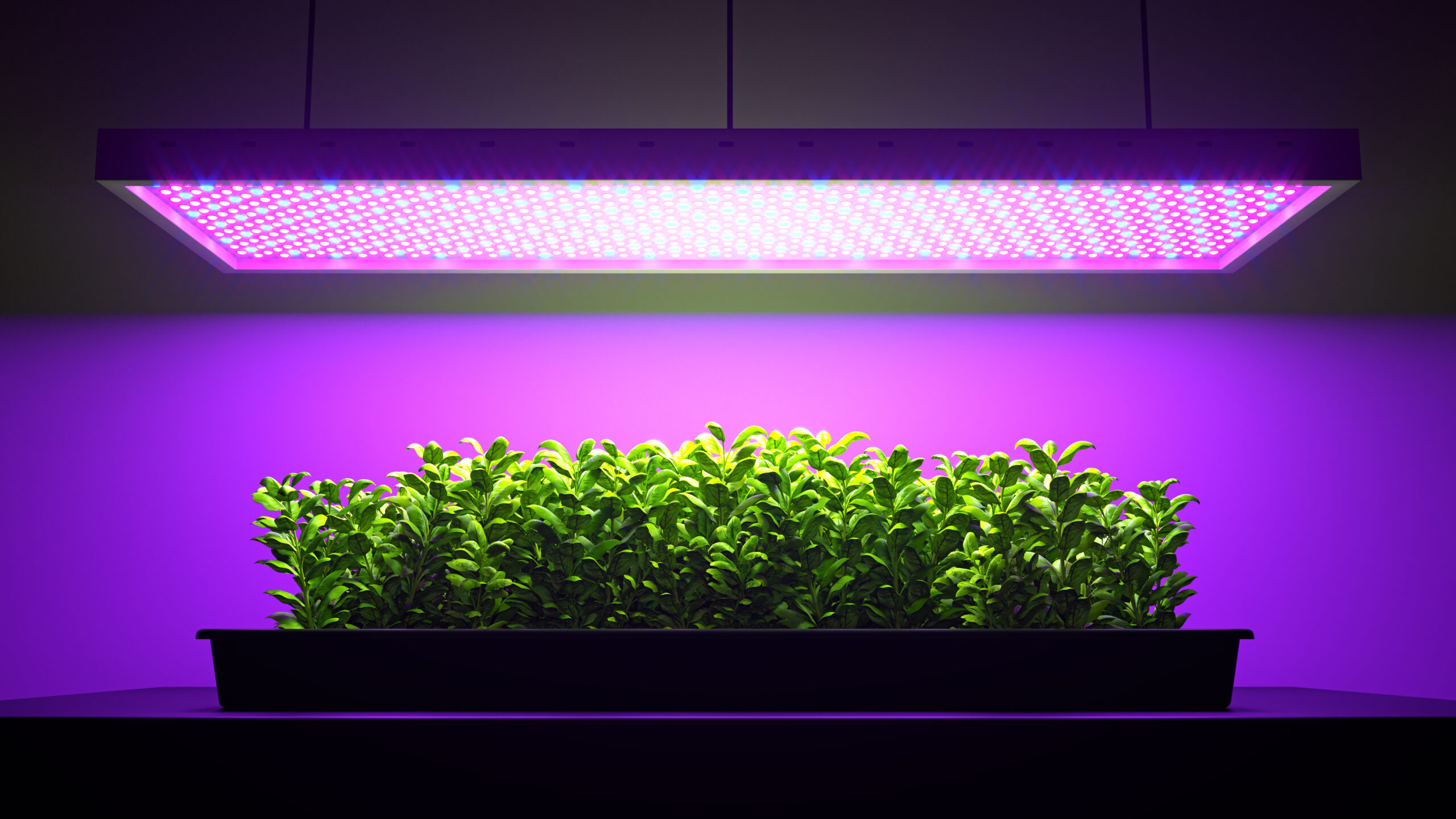
Selecting an appropriate grow light represents one of the most critical decisions in indoor herb gardening. The market offers numerous options, from simple single-bulb spotlights to elaborate multi-panel systems, each serving different space requirements and budget considerations. Full-spectrum LED spotlights with E26/27 bases in the twenty to forty-watt range represent the easiest entry point for beginners, as these bulbs fit standard household light fixtures without requiring specialized equipment or installation.
For small-scale indoor herb gardens with one or two plants, a basic LED spotlight costing between twenty and fifty dollars provides adequate illumination. These compact lights can be positioned six to eighteen inches above plants, with distance depending on wattage and intensity. Mid-range options include tabletop grow light systems equipped with adjustable stands, built-in trays, and automatic timers, typically costing fifty to one hundred fifty dollars. These systems accommodate four to six plants comfortably and offer convenient features like dimmable brightness levels and programmable light schedules.
For serious indoor gardeners planning a dedicated herb growing setup, LED grow light panels or multi-tier grow light stands provide superior light coverage and flexibility. The Mars Hydro TS 1000 and HLG Quantum Boards represent popular choices among advanced growers, offering professional-grade performance with PAR output sufficient for full-sun demanding herbs like basil, sage, and chamomile. These systems cost between two hundred and five hundred dollars but deliver consistent results and longevity, justifying the investment.
When evaluating grow light specifications, prioritize models offering full-spectrum capability, adjustable height features, built-in timers, and dimmable intensity settings. The coverage area matters significantly—a light covering a two-by-two-foot space suits most home herb gardens, while commercial operations require larger systems. Energy efficiency ratings indicate operational cost over time, making LED lighting superior to older fluorescent or HID alternatives that consume more electricity and generate excessive heat.
Types of LED Grow Lights for Herb Cultivation
The indoor growing market provides several distinct LED grow light categories, each with specific advantages for herb gardening. These types help match your growing situation with optimal technology.
- LED Spotlights and Clip Lights function as the most affordable and accessible option for growing herbs indoors. These compact fixtures attach to standard household light fixtures or clamp onto shelves, tables, or windowsills, requiring minimal setup. Models like the Vita LED Grow Light exemplify this category, offering full-spectrum illumination in a user-friendly format. They work excellently for supplementing natural window light or providing complete illumination for one to three plants. The trade-off involves a limited coverage area and light intensity compared to larger systems.
- Full-Spectrum LED Panels represent the next tier, offering broader light distribution across larger plant populations. These flat rectangular fixtures hang above growing areas and typically include multiple diodes delivering uniform illumination. Full-spectrum grow light panels excel for establishing dedicated growing spaces in basements, shelves, or unused corners. Their design facilitates heat dissipation, allowing placement closer to plants without risk of light burn, and many include adjustable hanging mechanisms enabling customization for different plant heights.
- T5 Fluorescent Grow Lights have served indoor gardeners for decades and remain viable alternatives to LEDs, though less efficient. T5 fluorescent lighting generates more heat than LEDs and requires more frequent bulb replacement, but costs substantially less initially. For gardeners on tight budgets or unsure about committing to indoor herb growing, T5 systems provide a reasonable starting point before upgrading to superior LED technology.
- Grow Light Stands integrate lights with shelving, creating compact vertical gardening systems perfect for apartments and homes with limited floor space. The Oslo 4-Tier LED Grow Light Garden exemplifies this category—stylish, space-efficient, and capable of supporting numerous herbs across multiple tiers. These systems range from two to four levels, each with individual grow light fixtures and spacing for trailing foliage.
LED Grow Light Placement and Distance Optimization
Proper LED light positioning maximizes illumination effectiveness while preventing light stress or damage to developing herbs. The distance between grow lights and plant foliage represents the primary consideration, varying based on light wattage, intensity, and specific herb requirements.
General positioning guidelines suggest maintaining six to twelve inches between light and plant canopy for intense fixtures—this distance delivers maximum PPFD suitable for demanding herbs. Moving lights twelve to eighteen inches away reduces intensity proportionally, suitable for moderate-light herbs or supplement scenarios. For larger coverage areas without individual plant optimization, distances of twenty to twenty-four inches work adequately, illuminating approximately four to six plants simultaneously.
Rosemary, a particularly light-sensitive herb, prefers positioning at forty-eight to seventy-two inches distance, requiring substantial vertical space. Conversely, basil, thyme, and mint comfortably tolerate closer placement at twelve to twenty-four inches, making them ideal for compact indoor growing setups. As herbs develop and mature, gradually lowering the lights increases illumination intensity, promoting branching and denser foliage.
Directional light adjustment enhances results significantly. Rotating pots every few days ensures uniform light exposure across all leaf surfaces, preventing one-sided growth and promoting balanced plant architecture. Adjustable grow light stands with movable fixtures facilitate this optimization more easily than fixed installations.
Optimal Light Duration and Daily Schedule
Determining appropriate daily light exposure duration profoundly affects indoor herb growth rates and plant morphology. While natural daylight follows seasonal variations, LED grow lights allow precise control over photoperiod length, enabling year-round consistent growing conditions.
Most culinary herbs thrive with fourteen to sixteen hours of daily artificial lighting, significantly longer than natural outdoor photoperiods. This extended exposure accelerates growth cycles and increases yields compared to natural conditions. For gardeners supplementing limited natural light with LED grow lights, operating supplemental systems for four to six hours daily often suffices if plants receive bright natural window light. Conversely, completely light-deprived spaces require ten to twelve hours of artificial illumination for adequate photosynthesis.
Shade-tolerant herbs like mint, parsley, cilantro, chives, and lemon balm manage adequately with ten to twelve hours of grow light exposure, making them excellent candidates for part-time lighting schedules. This flexibility reduces electricity costs while still supporting robust herb production. Incorporating built-in timers into grow light systems eliminates manual scheduling, ensuring consistent daily cycles that promote stable plant development and prevent stress-induced bolting or premature flowering.
Best Herbs for Growing Indoors Without Sunlight
Not all herbs respond equally to indoor growing with LED lighting. Species-specific light tolerances help select varieties most likely to thrive in your particular setup.
- High-Light Demanding Herb, including basil, dill, sage, chamomile, and rosemary, requires robust LED illumination providing fourteen to sixteen hours daily or very bright natural light supplementation. These Mediterranean-origin species evolved in intense sunshine and perform suboptimally under moderate light. However, they respond beautifully to adequate full-spectrum grow lights, producing abundant, flavorful foliage suitable for regular harvesting.
- Moderate-Light Herbs like thyme, oregano, marjoram, and tarragon tolerate twelve to fourteen hours of artificial lighting successfully. These species represent intermediate options—they appreciate adequate illumination but manage better than sun-demanding varieties under slightly reduced light conditions.
- Shade-Tolerant H,erbs including mint, parsley, cilantro, chives, arugula, and green o, onions thrive even with ten to twelve hours of LED growlight, or bright indirect natural light. These species evolved in forest understories or less intensely sunny climates, explaining their superior shade tolerance. For beginners or space-constrained gardeners, growing shade-tolerant herbs indoors offers the most accessible entry into indoor gardening.
Essential Care Practices for Indoor Herb Gardens
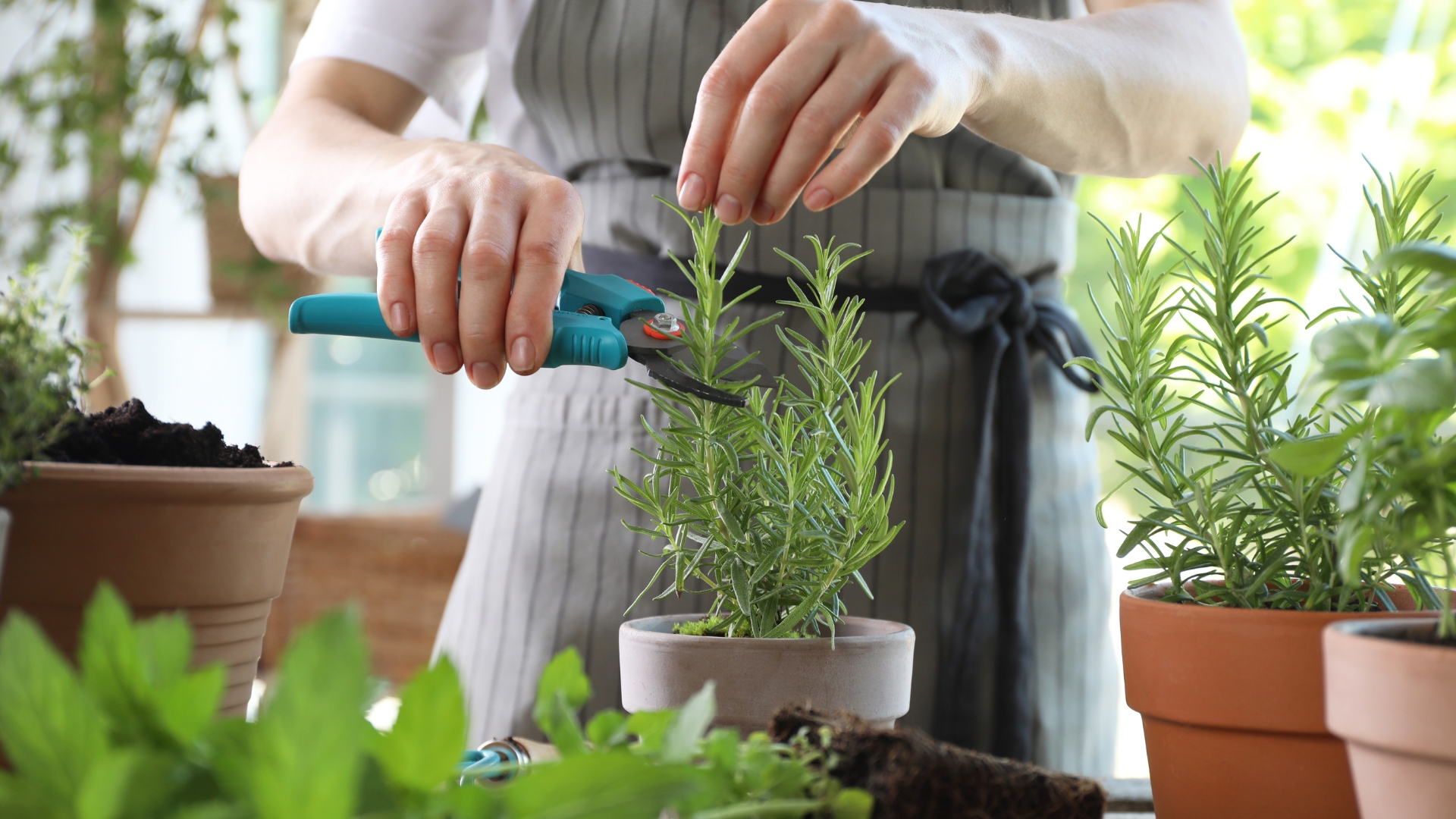
Success with growing herbs indoors without sunlight extends beyond simply providing grow lights. Complementary care practices ensure healthy plant development and harvestable yields.
- Watering requires careful attention since indoor growing environments lack the soil-drying effects of outdoor sun and wind. Check soil moisture before watering by pressing your finger one inch into the potting medium—water when it feels dry at this depth. Avoid overwatering, which encourages root rot and fungal diseases, particularly problematic in low-humidity indoor environments. Most herbs prefer slightly moist but well-draining soil rather than soggy conditions.
- Container and Drainage considerations significantly impact success rates. Use pots with bottom drainage holes to prevent water accumulation, paired with drain plates catching excess moisture. Breathable terracotta or clay pots work excellently as they allow soil aeration, preventing fungal problems. Ensure potting soil is light and porous—specialized cacti or seed-starting mixes work better than standard garden soil that compacts indoors.
- Humidity and Air Circulation influence indoor herb health, particularly under artificial lighting. Maintain relative humidity between forty and sixty percent and provide gentle air circulation through small fans or open windows. This prevents pest infestations and fungal diseases while supporting healthy gas exchange at leaf surfaces. Group multiple plants together to create a naturally higher humidity microenvironment.
- Fertilization requires restraint indoors since reduced environmental stress means plants need less nutrient supplementation than outdoors. Apply half-strength fertilizer solutions monthly during active growth, reducing frequency by half during slower seasons. Excess nitrogen from overfertilization promotes leggy growth, particularly problematic under artificial lighting.
Common Mistakes to Avoid When Growing Herbs Indoors
Common pitfalls help indoor gardeners achieve better results faster.
- Insufficient Light Duration represents the most frequent beginner error. Providing merely eight to ten hours of grow light when herbs need fourteen hours produces slow, leggy growth with weak flavor. Verify your light timer settings and increase duration before assuming growing conditions are otherwise inadequate.
- Improper Light Distance either positions lights too far away (reducing PPFD below recommended levels) or too close (risking light burn and excessive heat). Reference manufacturer guidelines for your specific grow light model and adjust distance based on plant response—leggy, stretching growth indicates insufficient proximity, while bleached or burned foliage suggests excessive intensity.
- Overcrowding Plants beneath shared grow lights creates shading issues and poor air circulation. Space plants appropriately so leaves don’t overlap and air flows freely between specimens. This prevents fungal problems and ensures all foliage receives adequate illumination.
- Neglecting Humidity and Ventilation in sealed indoor growing spaces promotes spider mites, powdery mildew, and other pest and disease issues. Maintain appropriate humidity levels and ensure adequate air movement through fans or periodic window opening.
Cost-Benefit Analysis of LED Grow Lights
Evaluating economic viability helps justify the LED grow light investment. Initial costs range from twenty dollars for simple spotlights to five hundred dollars for advanced multi-panel systems. However, this investment yields compelling returns through reduced heating and cooling requirements, extended growing seasons, and the value of fresh herbs.
LED grow lights consume fifty to seventy percent less electricity than older fluorescent or HID alternatives, with typical operational costs of five to fifteen dollars monthly for small residential setups. Quality LED fixtures last ten to fifteen years before significant output degradation, further improving value calculation. Additionally, year-round herb production eliminates reliance on expensive grocery store purchases, with fresh basil alone typically costing five to eight dollars per plant at retail—a single home herb garden easily supplies that value within months.
Troubleshooting Common Indoor Herb Growing Problems
Despite best efforts, occasional issues emerge. Recognizing symptoms enables rapid problem resolution.
- Leggy, Pale Growth typically indicates insufficient light intensity or duration. Increase grow light proximity or extend the daily illumination schedule. This symptom also occasionally reflects nitrogen deficiency—assess fertilization practices if light adjustments fail to improve appearance.
- Brown or Scorched Leaf Tips suggest light burn from excessive intensity, particularly near grow light panels. Increase the distance between light fixtures and the plant canopy. This symptom also occasionally reflects watering inconsistency or mineral accumulation—ensure consistent moisture and use filtered or distilled water if local water contains high mineral content.
- Yellowing Lower Leaves frequently indicates either inadequate nitrogen fertilization or natural senescence of the oldest foliage. Apply balanced fertilizer at half-strength concentration. Prune away extensively yellowed leaves to redirect plant energy toward healthy new growth.
- Pest Infestations, including spider mites, whiteflies, and aphids, occur more frequently indoors due to a lack of natural predators. Inspect plants regularly, removing insects manually when populations remain small. Moderate pest infestations respond to insecticidal soap applications; severe infestations warrant the removal of entire plants to prevent contamination spreading to neighboring specimens.
More Read: How to Maximize Your Balcony Garden Space With These 10 Tricks
Conclusion
Growing herbs indoors without sunlight using LED grow lights represents an achievable goal for home gardeners regardless of climate, living situation, or natural light access. By light requirements specific to your chosen herbs, selecting appropriately scaled and powered grow light systems, positioning fixtures at optimal distances, and maintaining consistent daily photoperiods alongside proper watering, humidity, and fertilization practices, you’ll successfully cultivate thriving herb gardens year-round in indoor spaces.
The initial investment in quality LED lighting technology pays dividends through years of reliable service, energy-efficient operation, and abundant fresh herbs for culinary enjoyment. Whether starting with a simple single-bulb spotlight for shade-tolerant mint or establishing a comprehensive multi-tier grow light stand supporting diverse herb varieties, this modern growing approach transforms windowless apartments, basements, and dedicated spaces into productive gardens that deliver restaurant-quality fresh herbs whenever you need them.

